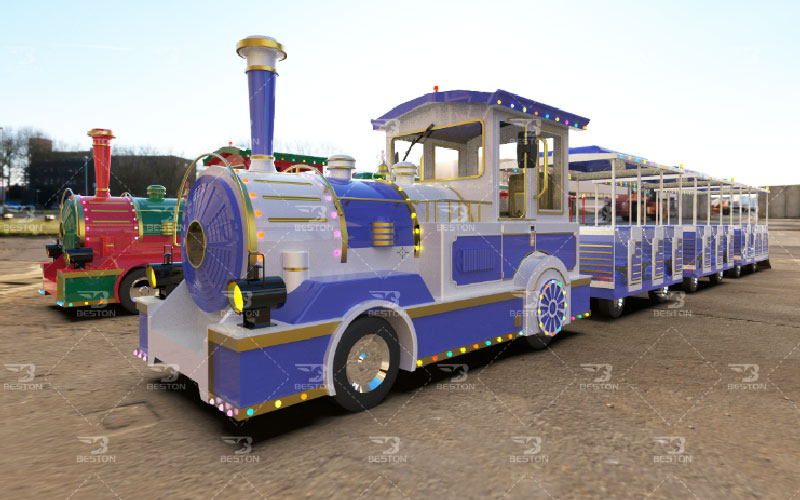When it comes to amusement park rides, trains are always a popular attraction. However, there are two main types of trains to consider: trackless trains and track trains. Both types offer different experiences and have unique features. In this article, we’ll discuss the difference between trackless trains and track trains to help you decide which is the best fit for your amusement park.
Trackless Trains
Trackless trains are a popular attraction in amusement parks, shopping malls, and other public spaces. As the name suggests, these trains do not require a track to operate. They are designed to navigate through various terrains and can travel on flat surfaces or uphill and downhill slopes. The trains are powered by a gasoline or electric engine and are controlled by an operator.

One of the primary advantages of trackless trains price is their flexibility. They can be used in various settings and can be customized to suit different themes and designs. Trackless trains are often used for sightseeing tours or as a shuttle service to transport visitors around a large park or mall.
Another advantage of trackless trains is that they are easy to install and operate. They do not require any special infrastructure or track system, which makes them cost-effective and low-maintenance. Additionally, they can be easily moved or relocated, making them ideal for seasonal or temporary events.
Track Trains
Track trains, on the other hand, require a track to operate. These trains are usually found in amusement parks and are designed to travel along a specific track system. The track can be made of steel, concrete, or wood and is often elevated or designed with loops and twists for added excitement.
Track trains are powered by a motor or chain drive system that propels the train along the track. The speed of the train can be controlled by an operator or set to a predetermined speed. Many track trains come with multiple cars or carriages that can accommodate a larger number of passengers.
One of the primary advantages of track trains is their ability to provide a thrilling ride experience. The track system allows for more complex and dynamic ride designs, such as loops, twists, and drops. Additionally, the track system ensures a smooth and safe ride, as the train is secured to the track at all times.
Another advantage of track trains is their visual appeal. The track system allows for elaborate and impressive ride designs that can be a major draw for visitors. The trains themselves can also be customized with different themes and designs, adding to the overall experience.
Key Differences
While both trackless trains and track trains are popular amusement park attractions, there are some key differences to consider.
Firstly, trackless trains offer more flexibility and versatility in terms of where they can be used. They can navigate through various terrains and do not require a track system, making them ideal for parks and public spaces with limited infrastructure.
On the other hand, track trains offer a more thrilling and visually impressive ride experience. They require a track system and are designed for more complex and dynamic ride designs, which can be a major draw for visitors.
Another key difference is the capacity of the trains. Trackless trains are typically smaller and can accommodate fewer passengers. In contrast, track trains can have multiple cars or carriages and can accommodate larger groups of people.
Finally, the cost and maintenance requirements of each type of train can vary. Trackless trains are generally cheaper to install and maintain, as they do not require a track system. However, track trains offer a more durable and long-lasting ride experience, which can result in lower maintenance costs over time.
Conclusion
In conclusion, both trackless trains and track trains offer unique and exciting ride experiences for amusement park visitors. These amusement train rides that made by the manufacturers (bestonamusementtrain.com) has become more and more popular. The choice between the two will depend on the specific needs and requirements of your park. If you require flexibility and versatility in terms of where the train can operate, a trackless train will help.
